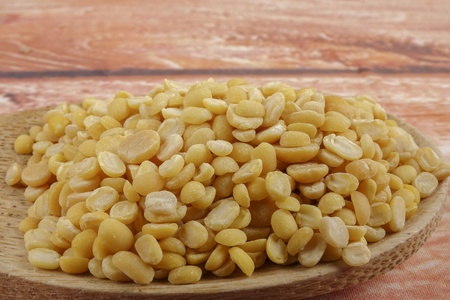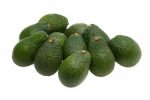
Pigeon pea (Cajanus cajan L. Millsp.) may be the pea to grow in warmer climates when the petit pois season has finally given way to the long, hot days of summer. The plant is a hardy perennial which produces a number of harvests throughout the year. The peas can be eaten fresh and the plant also makes a good nitrogen-fixer, so highly valuable for enriching soil and reducing soil erosion.
The pea is also known as toor, red gram, Angola pea, Congo pea, no-eye pea, kadios, and tropical green pea. It acquired the name pigeon pea because it has been traditionally used to feed pigeons. The pea is the main ingredient in m,nay different recipes such as dhals, African and Caribbean rice dishes, soups and stews. It works very well with fresh coconut and there are some who also pair it with a green mango.
The beans need to be soaked and then cooked for an hour if they are dried. Some say they have a nutty taste with a crisp texture. If they are very fresh, even the fresh pod can be eaten like a mange-tout.
Plant Description
It is an erect, glandular to pubescent, short-lived and perennial shrub. The plant grows up to 1–2 metres high with tetrarch taproots. The erect and ribbed stem is 15 cm in diameter. Leaves are trifoliate, alternate in dark green color above and silvery underneath. The plant produces yellow to red flowers which are 1.2 cm – 1.7 cm in diameter. These then form seed pods following pollination. The pods are linear-oblong, green or red, 2–13 cm long and 0.5–1.7 cm wide. Each pod contains about nine seeds which is subglobose – ellipsoid or slightly square in shape being 5 mm in diameter.
The seeds are white, cream, brown, purplish to black in color.
Cultivation Of Pigeon Pea
The pea has been grown for thousands of years. It probably started in east India and Africa but whatever its starting off point, the peas have been enjoyed by many people.
It is a legume grown in tropical and semitropical regions across the Old and New Worlds. While New World cultivation is relatively recent, pigeon pea is a traditional crop of South Asia and western and central Africa and with the African diaspora in the Caribbean. It is grown as a food and fodder crop and has additional use as a green manure crop.
Pigeon pea can grow up to around 4 m in height. It is a drought-tolerant crop and can grow with less than 300 mm annual rainfall due to its long tap roots, although it prefers 600–1,000 mm. The ideal temperature range for pigeon pea is 18–30°C; however it can resist temperatures over 35 °C. It is therefore a crop particularly suited to the drier tropics. It can be grown at altitudes of up to approximately 2,000 m, as long as the temperature is not too low.
To grow these peas, sow the seed about 1 inch deep in good soil. It might help to soak overnight before planting. The seeds can also be sprouted which means placing them in a plastic bag and leaving them in a warm spot.
These peas are often grown as annuals but will grow into these semi-shrub plants. It is a tropical plant so will not survive frost.


Leave a Reply